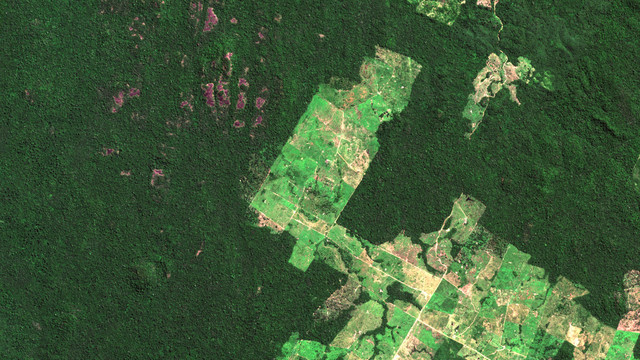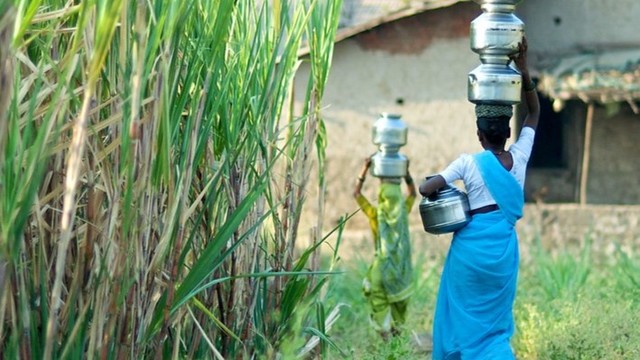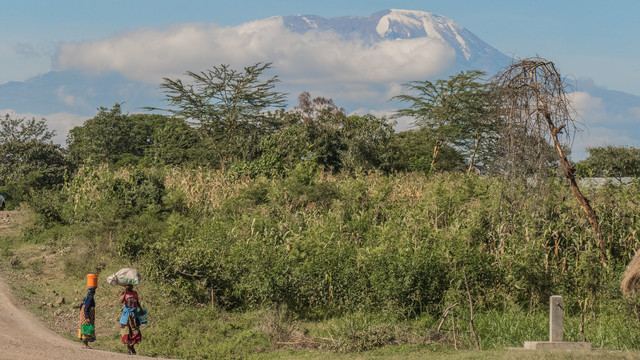Queering climate justice − what climate justice can learn from queer groups
Queer thinking and practice offers new perspectives in framing climate justice and climate action.


"There is no pride on a dead planet". LGBTQI+ communities have been systematically excluded from receiving government support because legal documents rely on a gender binary system (Photo: Mika Baumeister, via unsplash)
The concept of climate justice – increasingly becoming part of mainstream climate conversations − recognises unfairness associated with the causes and responses to climate change. It points to structural power imbalances caused by colonialism and capitalism as root causes of climate injustice.
Many rights-based movements, including civil rights, queer rights and women’s rights movements, have a long history in shaping concepts of justice and in highlighting these same causes of injustice.
Although climate justice has drawn from and built on ideologies from different right-based movements, this has not been clearly recognised in climate justice discourse.
Learning from queer practice and thinking
Climate justice and queer rights movements share critiques of structural power asymmetry and in their activism to champion the rights of marginalised groups.
In an article in Inside Climate News one climate activist describes climate justice as “a logical extension of… advocacy for sexual and gender rights” and draws connections between the goals of climate action and queer activists to recognise rights and realise a safe and sustainable future for all.
And yet, climate justice and queer experience are rarely explored together.
In an exploratory project IIED is examining why climate and development agendas so often ignore gender and sexual diversity and is looking for ways that climate action can learn from queer thinking and practice. This has included a series of dialogues between climate change researchers, practitioners, activists and queer organisations to cross pollinate learning and perspectives on climate justice.
Incorporating queer thinking and practice into climate justice could shed light on different approaches to gender and intersectionality in climate justice. Queer theory challenges norms around gender, identity and sexuality. It challenges concepts of what is ‘normal’ within our identities and what is ‘normal’ within society. It challenges economic models and accepted forms of knowledge in society such as capitalism and colonisation so often embedded in global North thinking and practice.
Through this work we are seeking to learn from queer groups to help broaden our perspectives and investigate how queer experience can advance climate justice and strengthen climate resilience.
Queering climate action
A growing body of research is examining how different social groups whose experiences are shaped by class, race and sexual orientation, gender identity/expression and sex characteristics (SOGIESC) are more vulnerable to the impacts of climate change and are further marginalised as the climate crisis escalates.
In disaster and humanitarian response following climate shocks, the LGBTQI+ community face increased levels of stigma, discrimination and gender-based violence. Many are denied access to aid and social protection.
In a recent dialogue organised by IIED on queering climate justice, one participant commented that LGBTQI+ communities are systematically excluded from receiving government support because legal documents rely on a gender binary system and do not recognise diversity of genders and expressions. They reflected “When [governments] design climate plans and policies, they only consider gender as women and girls. We are completely forgotten.”
In some cultural contexts, LGBTQI+ people are even blamed for being the cause of disasters leading to further marginalisation: “This narrative makes us more vulnerable in society, this misinformation and disinformation creates threats against our community”.
Bringing queer thinking and practice into climate action is about taking intersectionality more seriously. Queering challenges us to think beyond gender and other aspects of identity as the sole drivers of climate risk and vulnerability. It helps us consider other social, cultural, political and historical circumstances that also shape climate risk and vulnerability.
With this thinking, we can design a climate response that seeks to address the context of vulnerability rather than treat vulnerability as an isolated, individual experience. Queering the humanitarian response would seek to tackle the root causes of risk and put in place strong preventive measures to mitigate risk.
Queer thinking and colonisation
Queer practice and thinking around challenging societal norms can also bring valuable perspectives to the growing discourse around how climate injustice has been shaped by colonialism. In its 6th Assessment Report, the International Panel on Climate Change (IPCC) for the first time highlighted “ongoing patterns of inequity such as colonialism” as a driver of climate vulnerability.
Queer civil society has long been challenging the forces of colonisation and capitalism that have created winners and losers within society and quashed diversity of perspective, expression and being.
These same forces are simultaneously attempting to wipe out diversity of sexuality and gender. Many Indigenous communities around the world recognise the concept of a third gender or more genders in their societies. First Nations/Native American tribes use the term ’two spirit’ to describe a person possessing both male and female spirits, with fluid gender and sexuality. These concepts existed long before the colonial construct of ‘gender binary’ − classifying people as either male or female − displaced them.
Through queering we can ask ourselves the questions “why do we have a gender binary system?” and “how has it created winners and losers in our society?”. Queering sheds light on coloniality and oppression.
For western colonial powers, a gender binary system was a strategy to reshape social relations to better control and extract resources. It was used, for example, within the pre-colonial Yoruba people in Nigeria, Benin and Toga that had a gender-neutral social hierarchy. British colonists installed a gender binary system that only allowed men to be private property owners or only recognised men as native rulers. This effectively created systems of patriarchy where persons whose expression was other than ‘male’ were subordinates.
Queer practice and thinking enables us to decolonise knowledge, and to better acknowledge and celebrate diverse ways of being including different understandings of nature and human relationships, concepts of justice and environmental governance. These diverse perspectives challenge us to adopt more nature centred approaches to justice and question notions of growth in sustainable and resilient development.
IIED’s Gender Equality Champions Network (GECN) is also exploring ways to fund organisations working at the nexus of gender justice, climate and nature as well as new approaches for decolonising knowledge sharing practices.
We hope to continue learning from queer thinking and practice in developing more inclusive and decolonised approaches towards climate justice. We invite you to join us.




